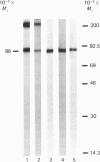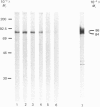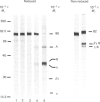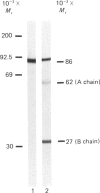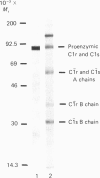Abstract
The association and activation states of complement subcomponents C1r and C1s biosynthesized by Hep G2 cells were studied. C1r and C1s are secreted in stoichiometric amounts; in the presence of Ca2+ they are associated in a complex that sediments similarly to plasma C1r2-C1s2. Both compounds are synthesized as monomer proteins of apparent Mr 86 000. C1r is secreted as a dimer. Secreted C1r is not autoactivatable but undergoes proteolysis by exogenous C1r; secreted C1s is also proteolysed by exogenous C1r. In the presence of immune-complex-bound C1q, secreted C1r and C1s are able to reconstitute C1, but normal activation requires extrinsic C1r2-C1s2.
Full text
PDF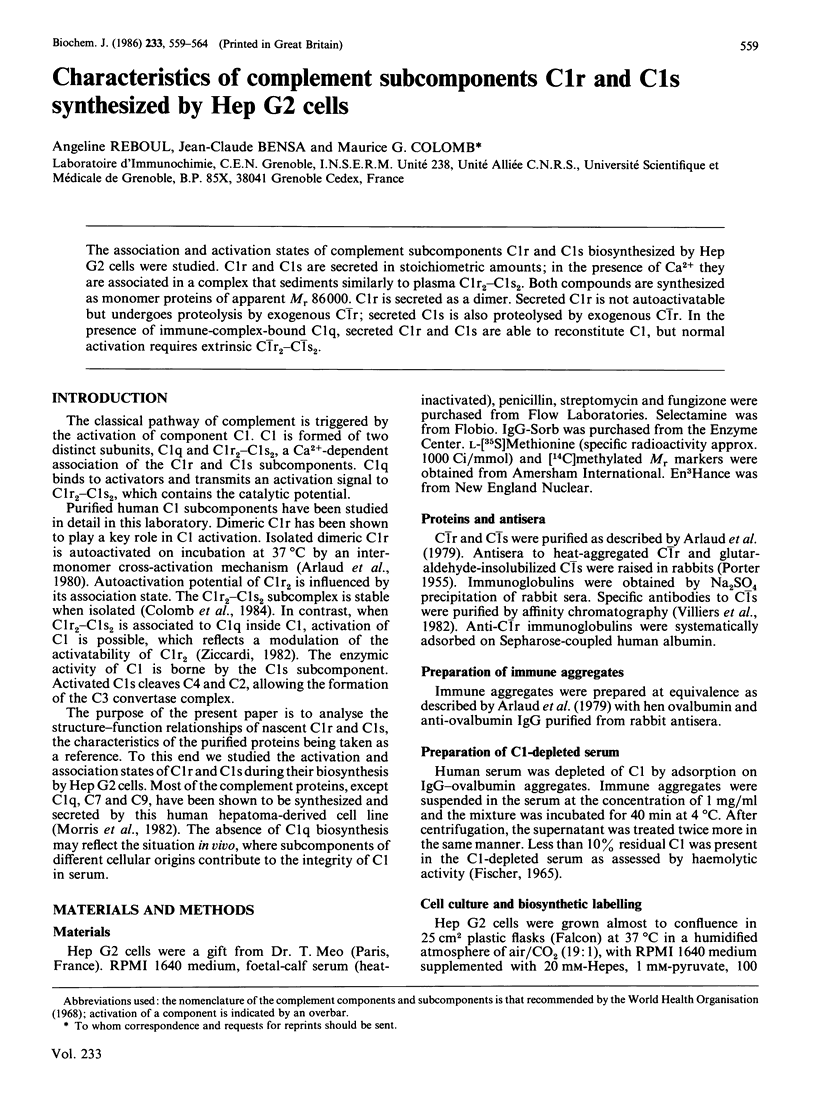
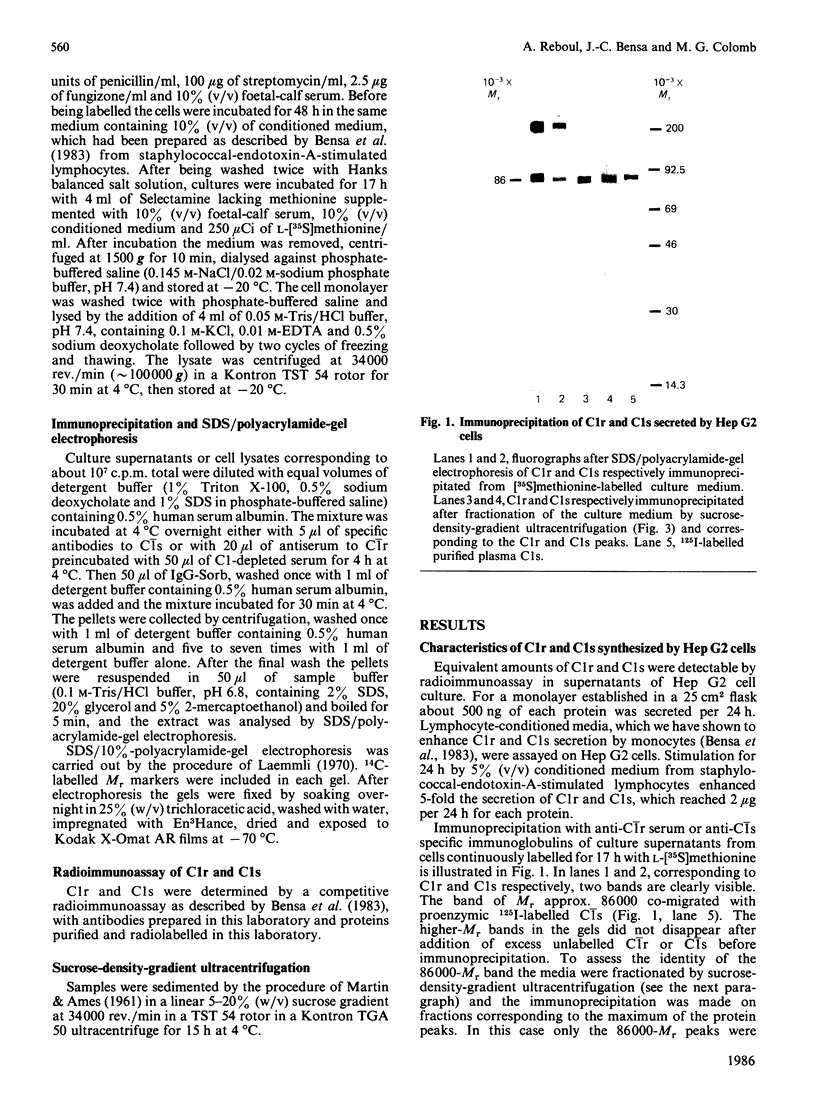
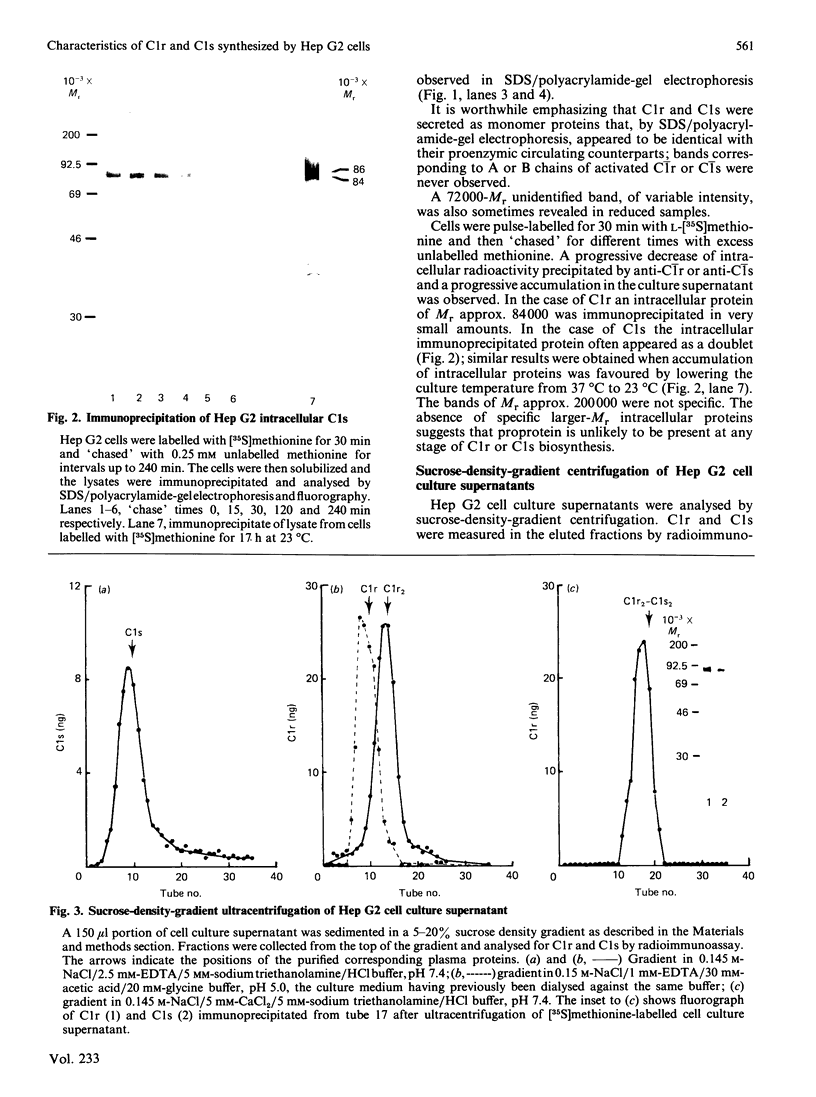
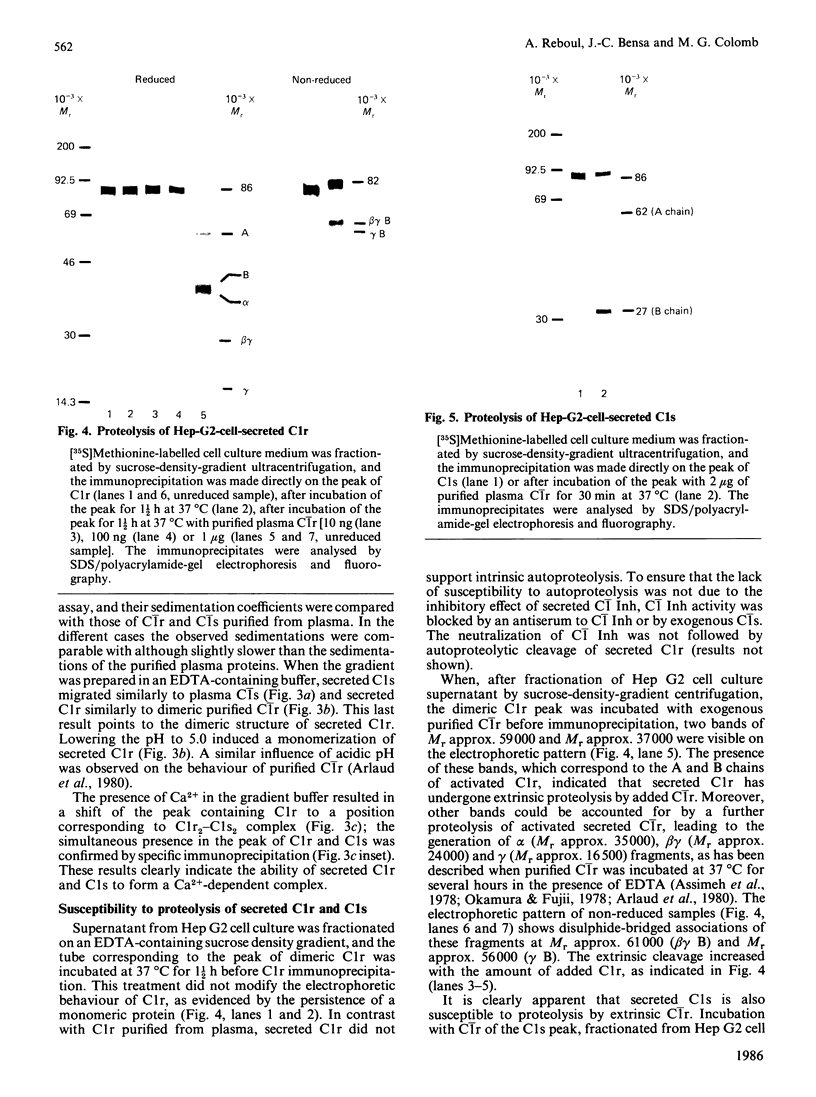
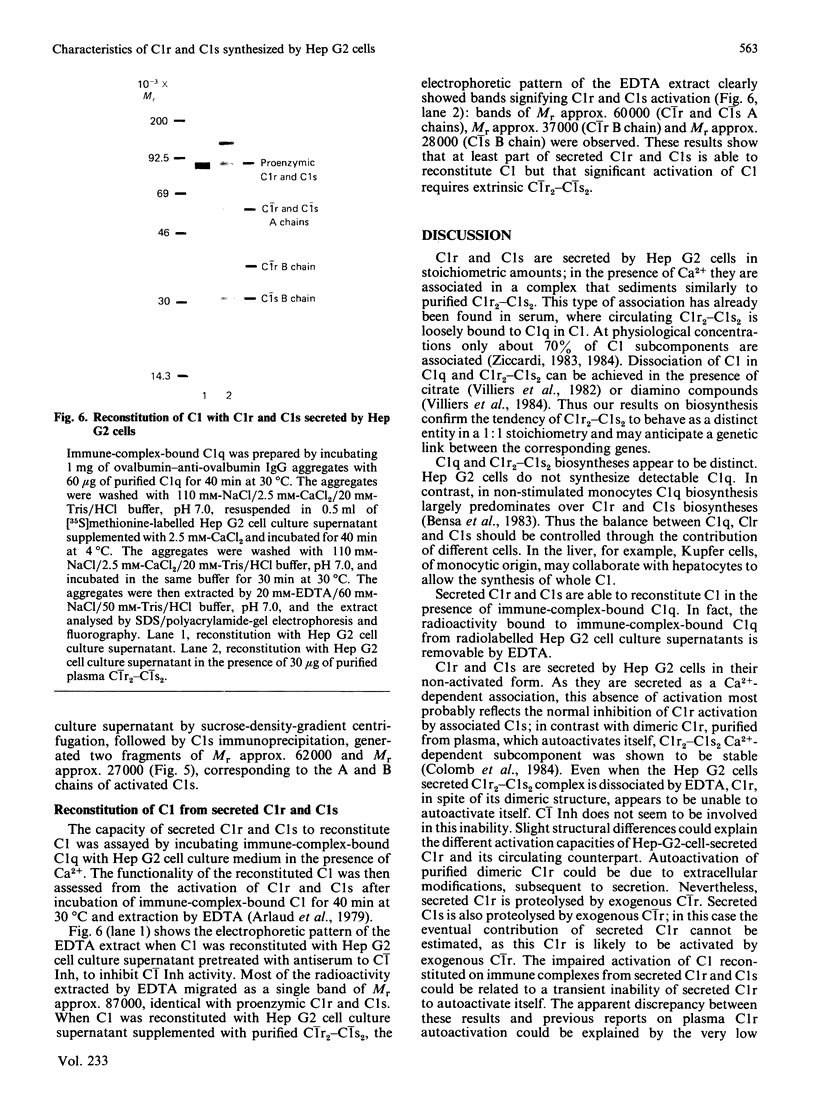

Images in this article
Selected References
These references are in PubMed. This may not be the complete list of references from this article.
- Arlaud G. J., Sim R. B., Duplaa A. M., Colomb M. G. Differential elution of Clq, Clr and Cls from human Cl bound to immune aggregates. Use in the rapid purification of Cl subcomponents. Mol Immunol. 1979 Jul;16(7):445–450. doi: 10.1016/0161-5890(79)90069-5. [DOI] [PubMed] [Google Scholar]
- Arlaud G. J., Villiers C. L., Chesne S., Colomb M. G. Purified proenzyme C1r. Some characteristics of its activation and subsequent proteolytic cleavage. Biochim Biophys Acta. 1980 Nov 6;616(1):116–129. doi: 10.1016/0005-2744(80)90269-7. [DOI] [PubMed] [Google Scholar]
- Assimeh S. N., Chapuis R. M., Isliker H. Studies on the precursor form of the first component of complement. II. Proteolytic fragmentation of Clr. Immunochemistry. 1978 Jan;15(1):13–17. doi: 10.1016/0161-5890(78)90020-2. [DOI] [PubMed] [Google Scholar]
- Bensa J. C., Reboul A., Colomb M. G. Biosynthesis in vitro of complement subcomponents C1q, C1s and C1 inhibitor by resting and stimulated human monocytes. Biochem J. 1983 Nov 15;216(2):385–392. doi: 10.1042/bj2160385. [DOI] [PMC free article] [PubMed] [Google Scholar]
- Colomb M. G., Arlaud G. J., Villiers C. L. Structure and activation of C1: current concepts. Complement. 1984;1(2):69–80. doi: 10.1159/000467818. [DOI] [PubMed] [Google Scholar]
- Laemmli U. K. Cleavage of structural proteins during the assembly of the head of bacteriophage T4. Nature. 1970 Aug 15;227(5259):680–685. doi: 10.1038/227680a0. [DOI] [PubMed] [Google Scholar]
- MARTIN R. G., AMES B. N. A method for determining the sedimentation behavior of enzymes: application to protein mixtures. J Biol Chem. 1961 May;236:1372–1379. [PubMed] [Google Scholar]
- Morris K. M., Aden D. P., Knowles B. B., Colten H. R. Complement biosynthesis by the human hepatoma-derived cell line HepG2. J Clin Invest. 1982 Oct;70(4):906–913. doi: 10.1172/JCI110687. [DOI] [PMC free article] [PubMed] [Google Scholar]
- Okamura K., Fujii S. Isolation and characterization of different forms of C1-r, a subcomponent of the first component of human complement. Biochim Biophys Acta. 1978 Jun 21;534(2):258–266. doi: 10.1016/0005-2795(78)90008-9. [DOI] [PubMed] [Google Scholar]
- PORTER R. R. The fractionation of rabbit gamma-globulin by partition chromatography. Biochem J. 1955 Mar;59(3):405–410. doi: 10.1042/bj0590405. [DOI] [PMC free article] [PubMed] [Google Scholar]
- Villiers C. L., Arlaud G. J., Colomb M. G. Diamine-induced dissociation of the first component of human complement, C1. Eur J Biochem. 1984 Apr 16;140(2):421–426. doi: 10.1111/j.1432-1033.1984.tb08119.x. [DOI] [PubMed] [Google Scholar]
- Villiers C. L., Duplaa A. M., Arlaud G. J., Colomb M. G. Fluid phase activation of proenzymic C1r purified by affinity chromatography. Biochim Biophys Acta. 1982 Jan 4;700(1):118–126. doi: 10.1016/0167-4838(82)90299-0. [DOI] [PubMed] [Google Scholar]
- Ziccardi R. J. A new role for C-1-inhibitor in homeostasis: control of activation of the first component of human complement. J Immunol. 1982 Jun;128(6):2505–2508. [PubMed] [Google Scholar]
- Ziccardi R. J. The first component of human complement (C1): activation and control. Springer Semin Immunopathol. 1983;6(2-3):213–230. doi: 10.1007/BF00205874. [DOI] [PubMed] [Google Scholar]
- Ziccardi R. J. The role of immune complexes in the activation of the first component of human complement. J Immunol. 1984 Jan;132(1):283–288. [PubMed] [Google Scholar]



